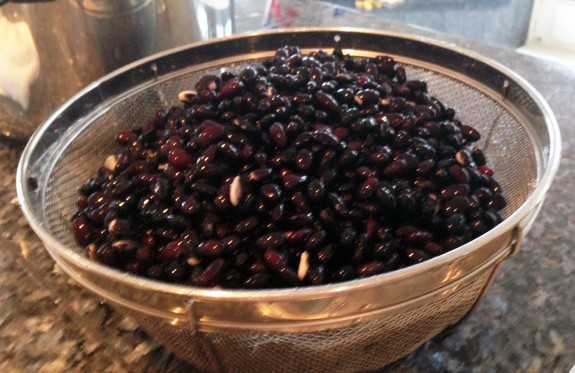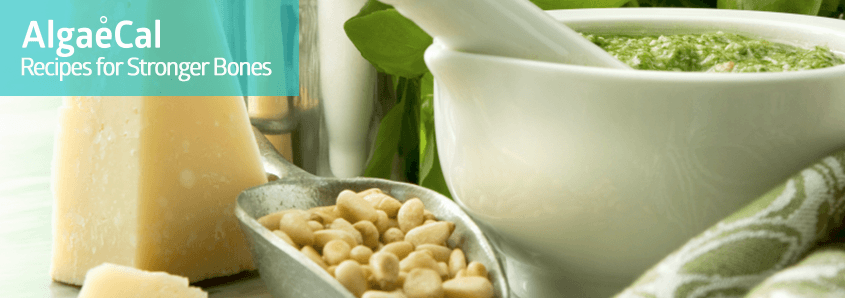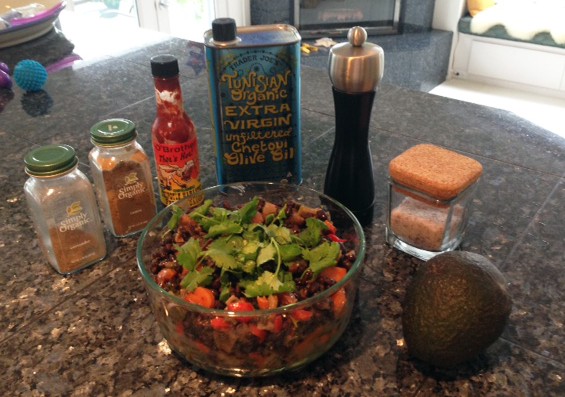Black beans help ease inflammation with a whole arsenal of anti-inflammatory agents. Remember, chronic inflammation activates osteoclasts, promoting bone loss. And black beans are loaded with anti-inflammatory phytonutrients.
Black beans derive their black color from a rich concentration of 3 powerful anthocyanin flavonoids: delphinidin, petunidin, and malvidin.
They also contain hefty amounts of two other flavonoids, kaempferol and quercetin, both well known for their anti-inflammatory and antioxidant actions.
Black Beans Bone Health Benefits
In addition to being anti-inflammatory phytonutrient superstars, a single cup of black beans gives you:
- ~ 180 milligrams of the omega-3 fatty acid, alpha-linolenic acid (ALA – also anti-inflammatory)
- ~ 15 grams of fiber (as much as the average American consumes in an entire day)
- 15 grams of protein (the amount of protein in 2 ounces of meat or fish).
- 256 micrograms of folate (more than 2/3 the 400 mcg RDI for folate & needed to keep down levels of highly inflammatory homocysteine)
- 120 milligrams of magnesium
- 46 milligrams of calcium
- 129 micrograms of molybdenum (Molydenum is the co-factor in virtually all the enzymes that metabolize the sulfur-containing enzymes, including the ones involved in glutathione production and recycling. Glutathione is arguably THE most important antioxidant in our bodies. It’s the antioxidant workhorse in every cell and organ. We produce it – with the help of molybdenum. (1)
AND, they taste great and fill you up while keeping you slim and trim – what more could you ask for?
The following recipe is one I make regularly. Let me know what you think in the comments below!


Pressure Cooked Black Beans with Veggies and Miso
Ingredients
- 4 cups black beans dried, organic
- 1 piece Kombu
- 1 tbsp Miso organic
- sea salt and pepper to taste
- 3-4 tbsp olive oil extra virgin
- 1 large red onion organic
- 2-3 carrots organic
- 2-3 stalks celery organic
- 2 large red sweet peppers organic
- 1 serrano pepper organic
- 1 jalapeno pepper organic
- 1 anaheim pepper organic
- 1 poblano pepper organic
- corn tortillas organic
- fresh cilantro or parsley
Optional
- 1-2 tsp cumin organic
- 1-2 tsp coriander organic
Instructions
- Put your black beans in a large bowl, cover with water and swish around to rinse. Pour in fresh water to fully cover the beans plus several inches (they will soak up the water and expand), cover and let sit overnight.
- The next morning, drain the water and if you are not going to cook the beans, put them in the refrigerator until you are ready to do so.
- Put the soaked and drained beans in your pressure cooker. Add 1 piece Kombu, 1 heaping tablespoon of Organic Miso (any kind will do – red, white, brown, chickpea, etc.)
- Add enough water to cover the beans by about 2 inches. Don’t fill the pressure cooker more than 2/3 full. You need to leave room for the pressure to build inside the pot.
- Put the lid on the pressure cooker and close, being sure the vent is in the closed position – the furthest to the right.
- Bring the pot to pressure over high heat, which will take 15-20 minutes. When pressure has been reached, the yellow button on the lid handle will pop up.
- Set your timer for 8 minutes. When it goes off, move the pot to your kitchen sink, put it under the faucet and let cold water run over the lid. Open the vent to let the steam escape while the cold water runs over the lid. When the yellow button drops back down into the handle, turn off the water. The pressure has been released, and you can open the pot.
- Remove the Kombu, which usually rises to the top of the pot, with a fork, tongs or slotted spoon.
- Pour the beans into the strainer to drain. Season and refrigerate – or put into freezer safe single serving bowls and freeze for later use.
- Rinse the pressure cooker but don’t scrub it out yet – use it to cook the vegetables and spices you’ll add to season the beans first. (I like to add lots of vegetables and spices. Choose the ones you prefer or add all of them; the flavor and nutrient content just gets better and better.)
- Dice the red onion, carrots, stalks of organic celery, red sweet peppers and the hot peppers.
- Put all the diced vegetables in the pressure cooker pot. Add 3-4 tablespoons of organic olive oil, salt, pepper, and spices to taste. (cumin and coriander).
- Cook your vegetables over medium heat until soft, about 15-20 minutes. You can put the pressure cooker cover back on loosely if you want to retain more moisture in the vegetables. If you prefer your onions more caramelized, leave the top off. Stir occasionally with a wooden spoon to prevent sticking.
- Pour the beans back into the pot and stir to mix the vegetables in.
- Top with fresh organic cilantro, chopped (or organic parsley if you don’t like cilantro).
Notes
Nutrition

I use our beans as a filling for organic corn tortillas and top them with sliced avocado, salsa and a dollop of organic plain, full-fat Greek yogurt. (You can make your own tortillas – again, super easy and fun to do. A tortilla press is very inexpensive or you can just use a pan to cook them. Wow, do they ever taste better than store bought!)
Or you can just serve a bowl along with some organic corn chips or organic brown rice. If you have a rice cooker, you can have the rice cooking while you cook the beans. (Also you can cook millet, quinoa, even oatmeal for breakfast in the rice cooker – very handy as it does the job and then keeps the food warm until you want it without burning it.)
Want more tasty bone healthy recipes like this one? Download your FREE Recipes for Stronger Bones Ebook.
[recipe_widget]
Sources:
- Akhtar MJ, Ahamed M, Alhadlaq HA, et al. Antioxidative and cytoprotective response elicited by molybdenum nanoparticles in human cells. J Colloid Interface Sci. 2015 Nov 1;457:370-7. doi: 10.1016/j.jcis.2015.07.034. Epub 2015 Jul 15. PMID: 26196721




Ruth Rucker
June 15, 2016 , 12:23 pmI am a dedicated customer and have been for a while. How do I obtain a copy of the ebook with Calcium-rich recipes?